How to Determine the Best Upvc and Cpvc Pipe Price for Your Project
Table of Contents
- Understanding UPVC and CPVC Pipe Types for Your Project
- Factors Influencing the Cost of UPVC and CPVC Pipes
- Comparing Prices from Different Suppliers and Retailers
- Calculating Total Costs for Installation and Maintenance
- Tips for Negotiating the Best Price on Your Pipes
- Identifying Quality Standards to Ensure Value for Money
- Essential Guide to PVC Ball Valves: Features, Specifications, and Price Comparison for 6-Inch Models
- FAQS
- Conclusion
- Related Posts
When you've got a construction or plumbing project on your hands, figuring out the right ups and downs of UPVC and CPVC pipe prices really matters. It's all about stretching your budget wisely and making sure everything goes smoothly in the end. I came across a recent market report from Research and Markets, and it’s pretty clear that the global market for these pipes is set to grow quite a bit. That’s mainly because people are looking for more efficient plumbing options, plus tougher building rules are coming into play. As someone who’s been in the trade for over 10 years, especially working with exports through Ningbo Pntek Technology Co., Ltd., I can tell you that prices are influenced by a bunch of things—like raw material costs, current demand, and what's available regionally. Whether you’re gearing up for a big installation or just doing a small DIY fix, staying in the loop about how UPVC and CPVC prices change can really help you cut costs and get better results in the end.

Understanding UPVC and CPVC Pipe Types for Your Project
So, when you're starting a project that involves UPVC and CPVC pipes, it's pretty important to get a good grip on what actually sets these two apart. UPVC, or Unplasticized Polyvinyl Chloride, is known for being tough and rigid—it's a solid choice for things like water supply lines or drainage systems. Now, CPVC, which is Chlorinated Polyvinyl Chloride, has the edge when it comes to handling hot water because it can resist higher temperatures. Basically, knowing these differences helps builders and project managers pick the right material for what they need.
On another note, the latest market reports show that the PVC pipes scene in India hit around USD 5.25 billion in 2024 and is expected to climb up to roughly USD 7.43 billion by 2030, growing at about 5.79% every year. That’s a clear sign that the demand for UPVC and CPVC pipes is only going up across different industries. Plus, the report from IMARC gives some solid insights into what’s needed for manufacturing these pipes—things like machinery, costs, and project specifics. For anyone thinking about jumping into manufacturing or just sourcing these pipes for upcoming projects, understanding these details can really help in setting the right price and making sure everything runs smoothly in the long run.
How to Determine the Best Upvc and Cpvc Pipe Price for Your Project - Understanding UPVC and CPVC Pipe Types for Your Project
| Pipe Type | Diameter (inches) | Length (feet) | Average Price ($) | Suitable Applications |
|---|---|---|---|---|
| UPVC | 1 | 10 | 3.00 | Drainage Systems |
| UPVC | 2 | 20 | 5.50 | Water Supply |
| CPVC | 1 | 10 | 3.50 | Hot Water Systems |
| CPVC | 2 | 20 | 6.00 | Plumbing |
Factors Influencing the Cost of UPVC and CPVC Pipes
Looking to find the best prices on UPVC and CPVC pipes for your project? Well, it's more than just picking the cheapest option—there are a bunch of factors that can really influence the cost. For example, how they're made makes a big difference. Newer technology and automation can cut down production costs, which often leads to more affordable prices in the market. Cool, right?
Then there’s the demand side of things. When construction projects ramp up or infrastructure work picks up, the supply and demand balance shifts, and that can drive prices up or down. And don’t forget about location—where your project is can impact costs too, thanks to transportation and local manufacturing capabilities. Keeping all these things in mind will help you make smarter decisions when sourcing materials. It’s all about balancing your budget without sacrificing quality, so knowing what's going on behind the scenes really helps!
Comparing Prices from Different Suppliers and Retailers
When you're looking to get some UPVC or CPVC pipes for a project, keep in mind that prices can really vary quite a bit depending on where you buy them. It’s a good idea to shop around a little—check out local hardware stores, browse online shops, and even look into specialized plumbing suppliers. A lot of times, they throw in promos or discounts if you buy in bulk, which can seriously save you some cash. I’d recommend making a quick list of maybe three to five suppliers and jot down their prices for similar pipe specs.
But don’t just go for the lowest price without considering other stuff too—things like shipping fees, return policies, and how the customer service is. Sometimes paying a bit more upfront can mean better quality or help if you run into issues later on. If you’re into apps or online tools, they can be a lifesaver—they let you compare prices easily when you enter your specs. Trust me, taking that extra time is worth it, because it helps you find a good balance between price and quality for what you actually need.

Calculating Total Costs for Installation and Maintenance
When you're planning out a project, it's really important to get a good grip on the overall costs — not just for installation, but also for ongoing maintenance. This becomes pretty crucial when you're deciding between UPVC and CPVC pipes. From what I've seen in industry reports, the initial price you pay for these materials can swing quite a bit, depending on factors like where you’re shopping and what's available locally.
For example, UPVC pipes usually run somewhere between 50 cents and 2 bucks a foot, depending on size and specs. On the other hand, CPVC tends to be a bit pricier — often from a dollar to three dollars per foot — because it's better at handling heat and tends to last longer.
And don’t forget about maintenance costs! Studies suggest UPVC pipes can last around 50 years, which is pretty good. But CPVC, thanks to its extra durability, can last even longer. So, even though CPVC might seem more expensive upfront, it could turn out to be cheaper overall, since you won’t need to repair or replace it as often. Plus, with more businesses adopting edge computing and other advanced tech, it’s super important to keep an eye on how these material costs impact your total expenses. Buying from trusted suppliers like Ningbo Pntek Technology Co., Ltd., known for their quality and experience, can really pay off in the long run — saving you money and headaches in the future.
Tips for Negotiating the Best Price on Your Pipes
When you're trying to get the best deal on UPVC and CPVC pipes, it really helps to stay updated on current market prices and trends. I mean, according to a report from the Freedonia Group, the demand for plastic pipes is expected to grow about 5.2% each year — mostly because there’s more investment happening in construction and infrastructure. Knowing this stuff gives you a bit of an edge when it’s time to negotiate because you’ll understand how prices might be shifting.
To actually score a good price, don’t just settle for the first quote you get. It’s a smart move to reach out to multiple suppliers and get a few estimates. A survey by Procurement Leaders even showed that companies who get bids from at least three suppliers can save up to 20% on their piping costs. Also, being flexible about how much you order can really work in your favor—many suppliers are more willing to cut you a deal if you’re ordering bigger quantities or considering a long-term contract. If you tap into market info and play your cards right during bidding, you should be able to land a pretty sweet deal for your pipes.
Identifying Quality Standards to Ensure Value for Money
When you're choosing UPVC and CPVC pipes for your project, it's really important to get a good feel for the quality standards. These standards set the baseline for how durable, safe, and high-performing the pipes should be. Taking a little time to learn about them can make a big difference — it helps you tell apart the better products from the cheaper, lower-quality ones. Trust me, this can really impact how long your plumbing lasts and how well it works down the line. And don’t forget to check if the pipes have certifications from well-known organizations; that’s usually a pretty reliable sign you're getting something good.

On top of that, it’s worth digging into the manufacturer’s specs and material details. Make sure the pipes meet both local and international standards—things like ASTM or ISO certifications are a good sign. Also, pay attention to things like how resistant they are to corrosion, their ability to handle high temperatures, and pressure ratings. Basically, these factors are key to ensuring the pipes perform well in different conditions. Putting some effort into research upfront might mean a bit more money at first, but it’s definitely worth it — you’ll end up with pipes that stand the test of time, and you'll save on repairs and replacements later on.
Essential Guide to PVC Ball Valves: Features, Specifications, and Price Comparison for 6-Inch Models
PVC ball valves are pivotal components in various industrial applications, especially where medium pressure systems are utilized. The typical pressure range for these valves lies between 8 to 16 kg, making them suitable for a variety of fluids and gases. The 6-inch model stands out due to its optimal size for ensuring efficient flow control in larger pipelines. As per market analysis, the price range for such 6-inch PVC ball valves can vary significantly, starting from as low as $0.10 per piece, with higher quality models reaching up to $8.00, depending on the specifications and features they offer.
When considering options for purchasing PVC ball valves, it’s essential to evaluate the material used. These valves are primarily made from durable plastic and rubber, which cater to different application needs, from residential to extensive industrial setups. Manufacturers often require minimum order quantities, with samples typically available for purchase at around $0.20 per piece. Customization is also an option with many suppliers, allowing businesses to order valves with customized logos or packaging, provided the minimum order is met. Moreover, shipping logistics are generally flexible, with sea freight as a common method for bulk orders, accommodating the growing demand in various sectors.
FAQS
: UPVC (Unplasticized Polyvinyl Chloride) is rigid and strong, ideal for water supply and drainage systems, while CPVC (Chlorinated Polyvinyl Chloride) has superior temperature resistance, making it suitable for hot water applications.
The Indian PVC pipes market was valued at approximately USD 5.25 billion in 2024 and is projected to rise to USD 7.43 billion by 2030, with a compound annual growth rate (CAGR) of 5.79%.
Compare prices from local hardware stores, online retailers, and specialized plumbing suppliers. Look for promotional discounts or bulk purchase deals, and consider using online comparison tools.
Besides price, consider shipping costs, return policies, and the supplier's customer service reputation, as these can impact overall satisfaction and future maintenance needs.
UPVC pipes typically range from $0.50 to $2.00 per foot, while CPVC pipes usually cost between $1.00 and $3.00 per foot.
While UPVC pipes have an expected lifespan of around 50 years, CPVC pipes often last longer due to their durability, potentially leading to lower overall maintenance expenses despite their higher initial cost.
Although CPVC may have a higher upfront cost due to its durability and heat resistance, its longevity can result in lower repair and replacement costs over time, making it a cost-effective option in the long run.
As businesses adopt edge computing solutions, they need to continuously assess how material costs influence overall operational expenses, emphasizing the importance of choosing high-quality pipe technology.
Builders and project managers should consider the specific requirements of their projects, such as the intended application (water supply vs. hot water), local market rates, and total cost implications for installation and maintenance.
Conclusion
When you're trying to figure out the best price for UPVC and CPVC pipes for your project, it’s really helpful to get a good understanding of the different types out there. Each kind has its own quirks, and those differences can actually affect how much you end up paying. Things like the quality of the material, the pipe diameter, and what you'll be using it for all play a part in pricing. It’s a smart move to check out prices from various suppliers—don't forget to include trusted names like Ningbo Pntek Technology Co., Ltd., which has over a decade of experience exporting pipes. They often offer competitive rates you might not find elsewhere.
Of course, it’s also important to think about the total costs—not just the upfront price, but also installation and ongoing maintenance. Planning ahead like this can really help keep your budget in check. And if you're up for it, a little negotiation can go a long way in snagging a better deal, all while making sure the quality’s up to snuff for the long haul. By keeping all these things in mind, you’ll be better equipped to make smart decisions that fit your project’s needs and get you the best value on your UPVC and CPVC pipes.
Related Posts
-
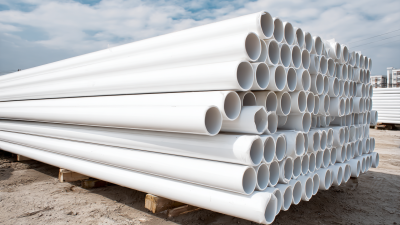
7 Essential Tips for Sourcing Upvc Pipes: What Every Global Buyer Needs to Know
-

7 Stunning Secrets to Affordable Pvc Pipe Fittings Price
-

5 Tips for Choosing the Right 2 PVC Valves for Your Project
-
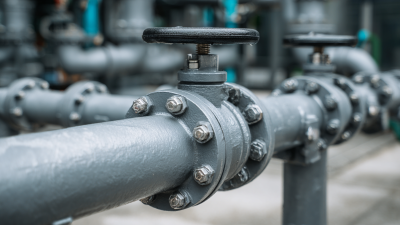
7 Essential Tips for Choosing the Best 6 PVC Ball Valves for Your Projects
-
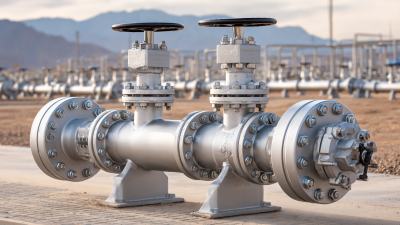
How to Evaluate the Cost Effectiveness of PVC Gate Valves for Your Procurement Needs
-
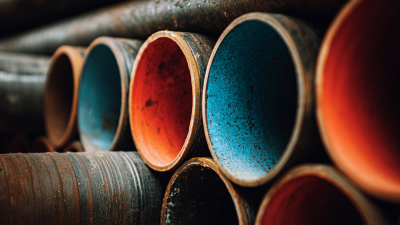
7 Essential Tips for Maximizing the Efficiency of Dipson Pipe in Your Projects
Blog Tags:

Isabelle
Application

Underground pipeline
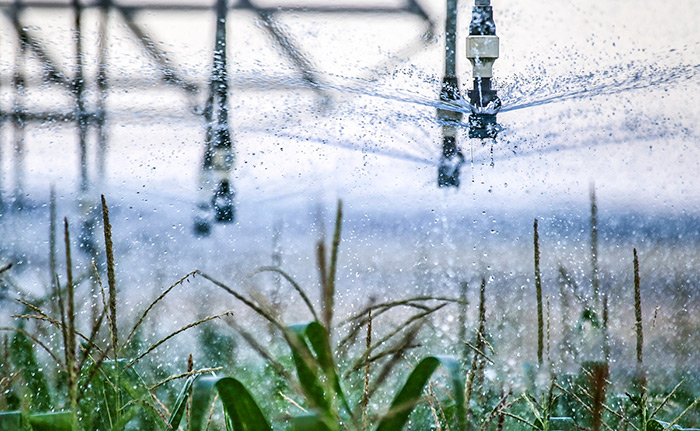
Irrigation System

Water Supply System


